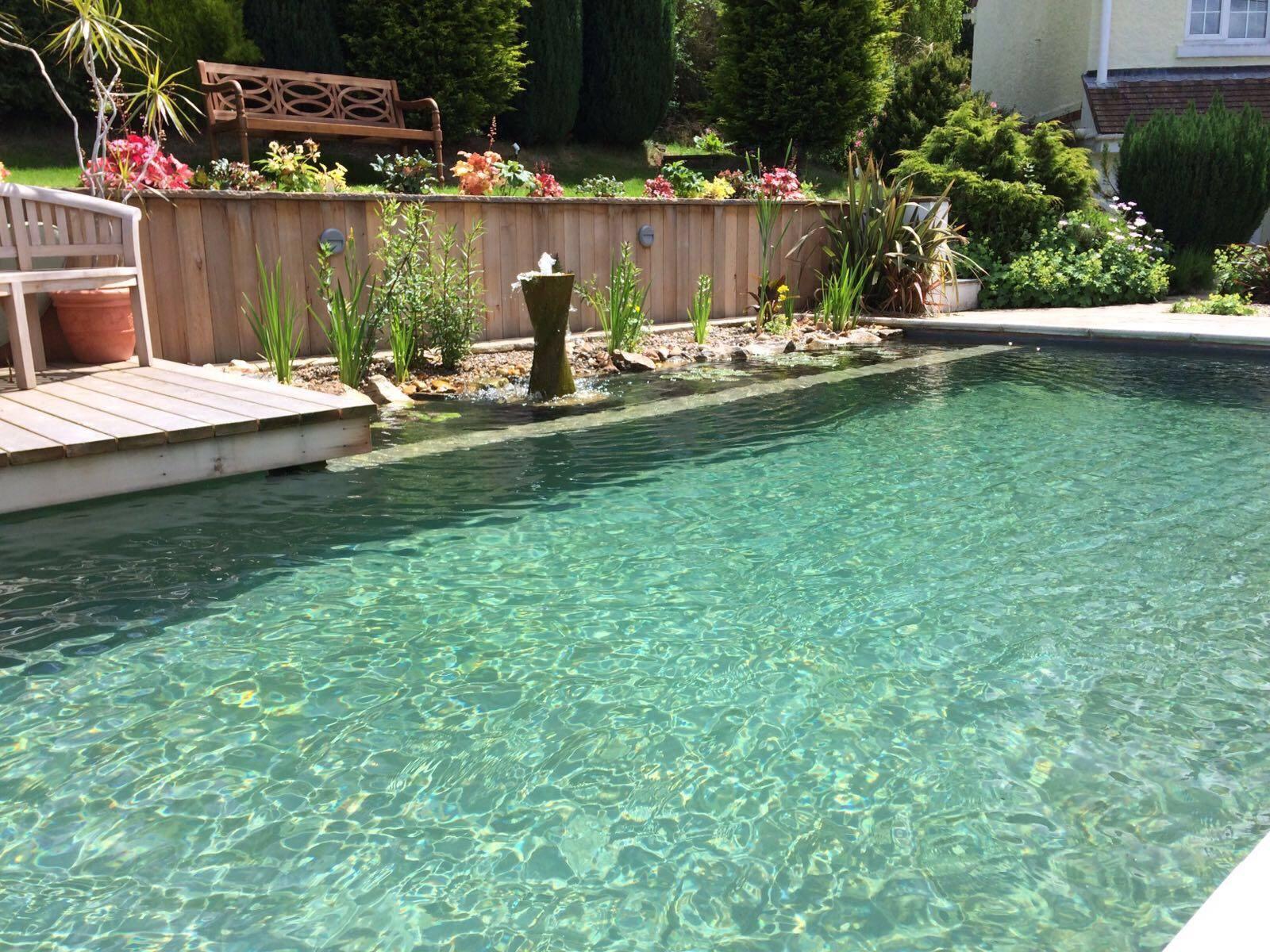Can Swimming Pools Be Sustainable?
It seems like an oxymoron, but it's possible.
Updated May 31 2019, 12:02 p.m. ET
In terms of instant heat relief, few things beat a pool in the summertime. When it comes to sustainability, though, pools aren’t exactly leaders in the space.
Maintaining a pool requires energy to heat it, chemicals to keep it clean, and lots and lots of water. Add that all up and it’s hard not to wonder if a “sustainable” swimming pool is even possible. But there are ways to green your pool, and the Europeans have already shown us how.
Natural swimming pools have been a familiar sight across Europe for several years now. Most people trace their origin back to 1980s Austria, where they were dubbed “schwimmteiche.” Natural pools come in all shapes and sizes, but they have a couple defining characteristics. The biggest is the cleaning process.
Natural pools ditch chlorine and other chemical cleaning agents for “regeneration zones” that allow the pools to essentially clean themselves. Water from the pool is circulated into this zone, where aquatic plants filter it and boost oxygen levels. Strategically placed rocks and gravel also assist with the purification process.
Because natural pools have cattails and lilies sprouting out of them, they usually look more like ponds than swimming pools. But that doesn’t mean they’re dirty — those regeneration zones really work. While the coloring is a little different than the blazing blue swimming pools most of us recognize, natural pools aren’t clogged with sediment. They can actually look quite pristine, as these real-life examples illustrate.
The cleaning process is great for the environment, since it’s not adding chlorine to the atmosphere, but it’s also less work for homeowners. Other than skimming the pool and trimming the plants, you don’t have to do much maintenance. Plus, you’re not spending cash on cleaning supplies, and that’s not the only way natural pools save you money.
Natural pools also use less energy than typical swimming pools. They do require pumps to push the water into the regeneration zones, but stripped of energy-sucking filtration gadgets, they’re pretty efficient systems. In the long run, a natural pool will cost you less in upkeep than standard swimming pools.
But they’re definitely an investment. Since these pools require intensely customized work and this isn’t Europe, where specialized contractors are easier to find, the bill can easily run up a few extra thousand dollars.
There are quicker, inexpensive ways to make a swimming pool more sustainable. Some homeowners achieve a halfway point between natural and chlorine pools with moss filters, like the ones offered at Creative Water Solutions and ACCO. Energy Star certified pumps can help lower your power consumption, and you can also swap a traditional heater for a solar-powered one. If you have lights around your pool, use LED bulbs to power them.
While swimming pools use a ton of resources, they can be sustainable — or at least a little more sustainable — with a few fixes. And best of all? Those fixes benefit the earth and your bank account.



